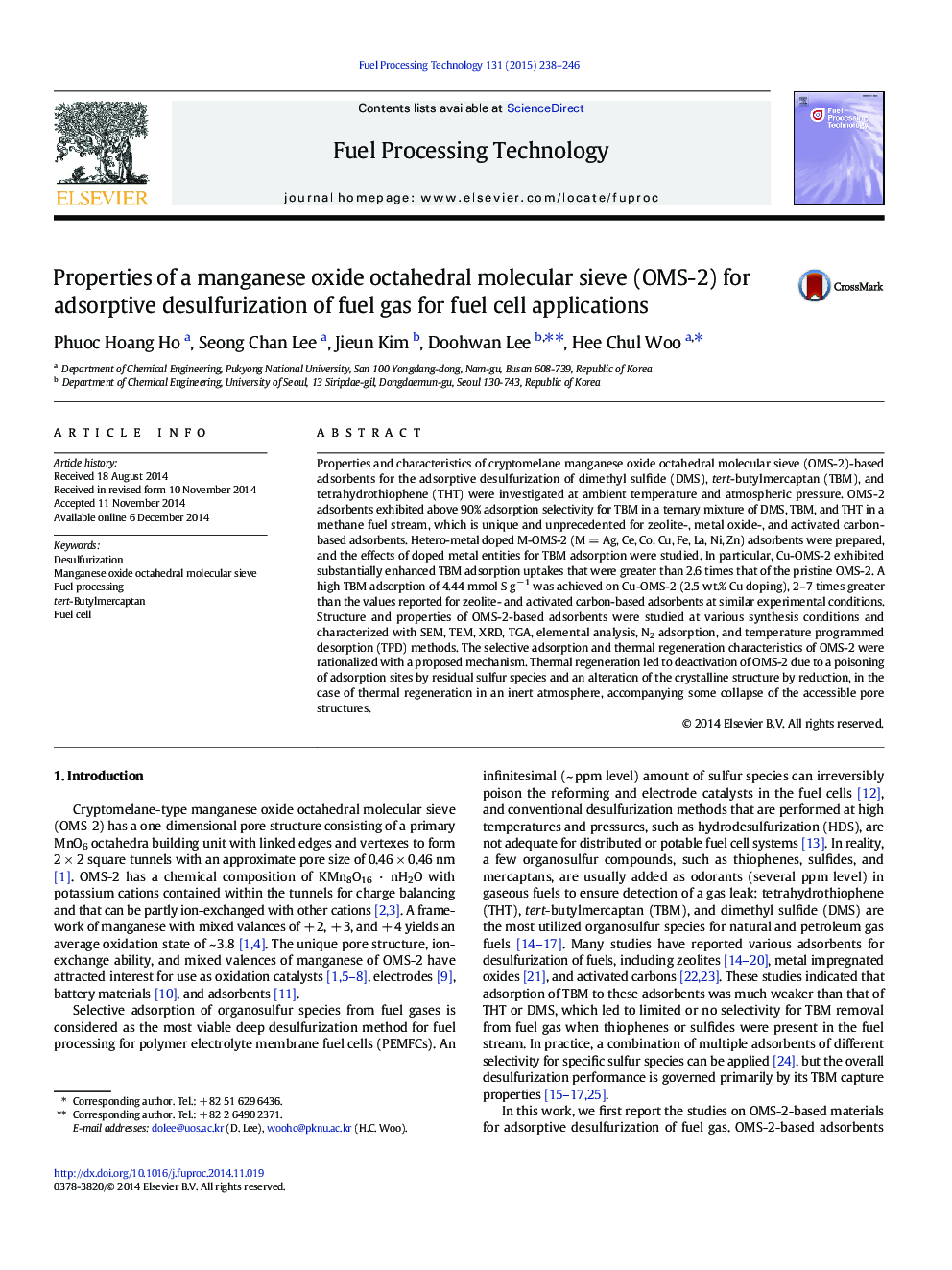| کد مقاله | کد نشریه | سال انتشار | مقاله انگلیسی | نسخه تمام متن |
|---|---|---|---|---|
| 209361 | 461668 | 2015 | 9 صفحه PDF | دانلود رایگان |

• Manganese oxide octahedral molecular sieve (OMS-2) based adsorbents were prepared.
• Desulfurization properties for fuel gases were characterized at ambient temperature.
• The effects of hydrothermal temperature, time, and hetero-metal dopants were investigated.
• OMS-2 exhibited unprecedented high adsorption selectivity for tert-butylmercaptan (TBM).
• Adsorption capacity of TBM could be enhanced by Cu doping into the OMS-2 structure.
Properties and characteristics of cryptomelane manganese oxide octahedral molecular sieve (OMS-2)-based adsorbents for the adsorptive desulfurization of dimethyl sulfide (DMS), tert-butylmercaptan (TBM), and tetrahydrothiophene (THT) were investigated at ambient temperature and atmospheric pressure. OMS-2 adsorbents exhibited above 90% adsorption selectivity for TBM in a ternary mixture of DMS, TBM, and THT in a methane fuel stream, which is unique and unprecedented for zeolite-, metal oxide-, and activated carbon-based adsorbents. Hetero-metal doped M-OMS-2 (M = Ag, Ce, Co, Cu, Fe, La, Ni, Zn) adsorbents were prepared, and the effects of doped metal entities for TBM adsorption were studied. In particular, Cu-OMS-2 exhibited substantially enhanced TBM adsorption uptakes that were greater than 2.6 times that of the pristine OMS-2. A high TBM adsorption of 4.44 mmol S g− 1 was achieved on Cu-OMS-2 (2.5 wt.% Cu doping), 2–7 times greater than the values reported for zeolite- and activated carbon-based adsorbents at similar experimental conditions. Structure and properties of OMS-2-based adsorbents were studied at various synthesis conditions and characterized with SEM, TEM, XRD, TGA, elemental analysis, N2 adsorption, and temperature programmed desorption (TPD) methods. The selective adsorption and thermal regeneration characteristics of OMS-2 were rationalized with a proposed mechanism. Thermal regeneration led to deactivation of OMS-2 due to a poisoning of adsorption sites by residual sulfur species and an alteration of the crystalline structure by reduction, in the case of thermal regeneration in an inert atmosphere, accompanying some collapse of the accessible pore structures.
Figure optionsDownload as PowerPoint slide
Journal: Fuel Processing Technology - Volume 131, March 2015, Pages 238–246